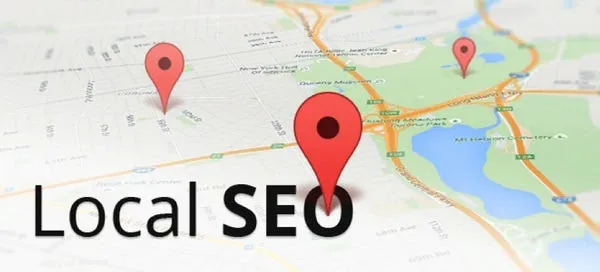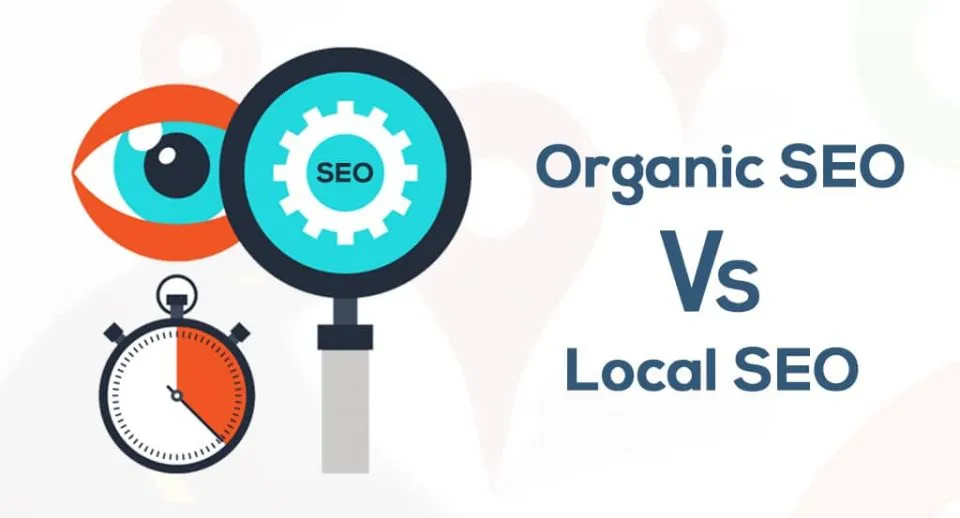Let’s clarify: SEO and local SEO are not entirely different. Local SEO is an SEO term. Think of SEO as the parent of local SEO—they’re more like family members. They belong to the same family but have different focuses. SEO (Search Engine Optimization) is the process in which people find you online. This includes local, global, technical and more. But what about local SEO? It’s about getting found nearby, meaning ranking locally or in a specific location.
If you’re a local business—think coffee shop, hair salon, plumber, dentist, or gym—you can’t afford to confuse the two. If your audience is located across the country, ranking #1 in Google is not beneficial. You want to be visible to people around the corner. So, what is the actual difference? In this blog, we explore the topic that is what is the difference between SEO and Local SEO.
SEO Means Visibility of Your Business in the Global or Local market.

SEO is designed to help your website rank higher in search engine results. It’s about competing in the big leagues, often at a national or global level. So if you’re running an online store that ships everywhere, a blog monetizing ad traffic, or a software business with a wide user base, SEO is your strategy.
SEO has many terms like
- Local SEO
- On-Page SEO
- Off-Page SEO
- Technical SEO
- International SEO
- E-commerce SEO
- App Store SEO (ASO) and more
The goal? Drive organic traffic, build domain authority, and climb the rankings for highly searched topics.
Local SEO means visibility in Specific Areas or Locations

Local SEO zooms in. It’s all about getting found by people in your area who are ready to take action. It focuses on location-specific searches like “Italian restaurant near me” or “emergency dentist in Chicago.” These people aren’t browsing — they’re looking to show up, call, or buy today. That’s a completely different game.
Local SEO focuses on:
- Google Business Profile optimization
- Local keywords (like “plumber in Austin”)
- NAP consistency (Name, Address, Phone number across the web)
- Customer reviews and local ratings
- Map pack rankings (that 3-pack of businesses you see under the map)
- Local backlinks and directory listings
In other words, it’s SEO with a street address and built to connect you with nearby, ready-to-convert customers.
Quick Comparison: SEO vs Local SEO
Aspect | SEO (Search Engine Optimization) | Local SEO (Local Search Engine Optimization) |
Target Audience | A broad, often global or national audience | A specific local or regional audience |
Goal | Increase overall website visibility in search engines | It’s all about local search results and maps ranking |
Keywords Focus | Generic or high-volume keywords (e.g., “best laptops”) | Location-specific keywords (e.g., “best laptops in Austin”) |
Search Results | Appears in general organic search results | Appears in local pack, Google Maps, and localized search results |
Google Business Profile | Not required, but helpful | Essential for local visibility |
Backlinks | Focus on authoritative backlinks from relevant websites | Emphasis on local backlinks from directories, local sites, and businesses listings |
Content Strategy | Broad, informative content targeting wider topics | Locally relevant content, events, and location-specific landing pages |
Online Reviews | Less emphasis, though still important | Highly influential in rankings and trustworthiness |
Citations & NAP Consistency | Not a major focus | Critical—accurate Name, Address, Phone number info across directories is vital |
Technical SEO | Involves site speed, mobile-friendliness, structured data, etc. | Also important, with additional focus on local schema markup |
Typical Users | E-commerce sites, blogs, and national brands | Local businesses, service providers, restaurants, and healthcare professionals |
Why the Difference Between SEO and Local SEO Matters for You
Focusing on Organic SEO won’t cut it if you’re running a local business. You could be optimizing for all the right keywords and still miss 90% of your audience because Google doesn’t know where you are. Local SEO makes sure your business shows up in local searches, maps, and “near me” results — exactly where customers are searching with intent.
On the flip side, if your business isn’t tied to a location — like an online store or digital agency — local SEO probably isn’t your main focus. Traditional SEO will give you more reach and long-term traffic.
So, Do You Need SEO or Local SEO?
Here’s the cheat sheet:
- If you run a business in which you need only your nearby or local customers, you need Local SEO.
- If your business is location-independent, go with traditional SEO.
- And if you serve both? You need a blend of both strategies, optimized in the right way.
You don’t just want clicks. You want the right people to find you, right when they need you.
Final Word on the Difference Between SEO and Local SEO
Same Goal, Different Paths
Both SEO and Local SEO aim to make your business more visible, but how they do it depends on where your audience is. SEO brings in the world or locally both because it is main process and other are its terms like local SEO, while local SEO brings in your neighborhood. The better you understand the difference, the smarter your strategy will become.
So don’t just optimize for “traffic.” Optimize for relevance. Make sure you’re showing up for the people who are most likely to buy, book, or walk through your door today.


